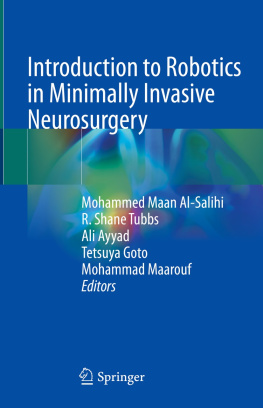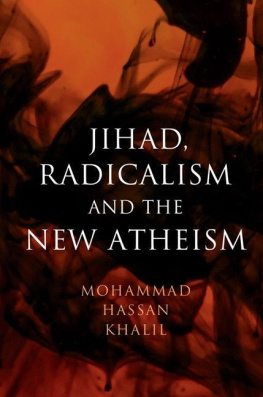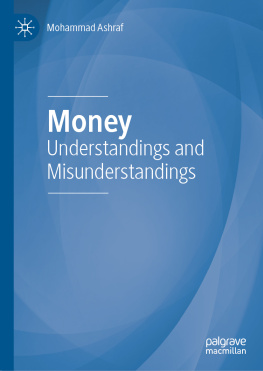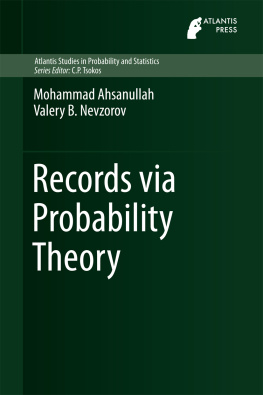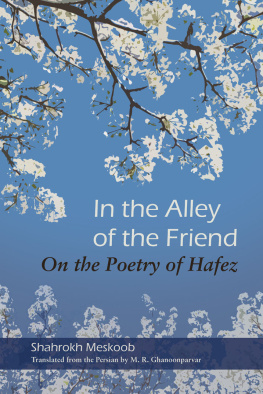Ali Dashti - Twenty Three Years: A Study of the Prophetic Career of Mohammad
Here you can read online Ali Dashti - Twenty Three Years: A Study of the Prophetic Career of Mohammad full text of the book (entire story) in english for free. Download pdf and epub, get meaning, cover and reviews about this ebook. year: 0, genre: Religion. Description of the work, (preface) as well as reviews are available. Best literature library LitArk.com created for fans of good reading and offers a wide selection of genres:
Romance novel
Science fiction
Adventure
Detective
Science
History
Home and family
Prose
Art
Politics
Computer
Non-fiction
Religion
Business
Children
Humor
Choose a favorite category and find really read worthwhile books. Enjoy immersion in the world of imagination, feel the emotions of the characters or learn something new for yourself, make an fascinating discovery.
- Book:Twenty Three Years: A Study of the Prophetic Career of Mohammad
- Author:
- Genre:
- Year:0
- Rating:4 / 5
- Favourites:Add to favourites
- Your mark:
- 80
- 1
- 2
- 3
- 4
- 5
Twenty Three Years: A Study of the Prophetic Career of Mohammad: summary, description and annotation
We offer to read an annotation, description, summary or preface (depends on what the author of the book "Twenty Three Years: A Study of the Prophetic Career of Mohammad" wrote himself). If you haven't found the necessary information about the book — write in the comments, we will try to find it.
Twenty Three Years: A Study of the Prophetic Career of Mohammad — read online for free the complete book (whole text) full work
Below is the text of the book, divided by pages. System saving the place of the last page read, allows you to conveniently read the book "Twenty Three Years: A Study of the Prophetic Career of Mohammad" online for free, without having to search again every time where you left off. Put a bookmark, and you can go to the page where you finished reading at any time.
Font size:
Interval:
Bookmark:
His birth
His childhood
The problem of prophethood
His appointment
After his appointment
The setting
Miracles
The miracle of the Quran
Mohammad's humanity
The emigration
The change in Mohammad's personality
The establishment of a sound economy
The advance to power
Prophethood and rulership
Women in Islam
Women and the Prophet
God in the Quran
Genies and magic
Cosmogony and chronology
The succession
The quest for booty
The religion of Islam, founded by Mohammad in his prophetic career which began in 610 and ended with his death in 632, has helped to shape the cultures and lifestyles of many nations.
In the last hundred years, numerous scholarly books have been written about Mohammad, the Quran, and Islamic theology, laws, sects, and mystic movements. Foreign scholars have accomplished essential tasks of gathering and analysing data. Indigenous scholars have for the most part written expositions and apologia, and with exceptions such as the Egyptian Tam Hosayn, who lived from 1889 to 1973 and was blind, have not paid much attention to difficulties.
The book Bisl O Seh Sal (Twenty Three Years) by the Iranian scholar Ali Dashti (l89~1981-2) is valuable because it discusses both values and problems which Islam presents to modern Moslems.
Born in 1896 in a village in Dashtestan, a district adjoining the port of Bushehr on the Persian Gulf, Ali Dashti was the son of Shaykh Abd ol-Hosayn Dashtestani. At a young age he was taken by his father to Karbala in Iraq, which then belonged to the Ottoman empire. Karbala, where the Prophet Mohammad's grandson Hosayn was martyred in 680, and Najaf(about 70 km. or 43 m. to the south), where the Prophet's cousin and son-in-law Ali was martyred in 661, are visited by Shi'ite Moslem pilgrims and have colleges (madrasas) where Shi'ite clergy Coloma) are trained and theological studies are pursued. Despite the unsettled conditions in the First World War, Ali Dashti received a full training in these madrasas and acquired a thorough knowledge of Islamic theology and history, logic, rhetoric, and Arabic and Persian grammar and classical literature.
After his return from Iraq to Iran in 1918, however, he decided against a clerical career. Having strong patriotic feelings and an awareness of world developments, he preferred to devote his fluent pen to journalism. Eventually he succeeded in establishing his own newspaper at Tehran, Shafaq-e Sorkh (Red Dawn), which lasted from 1 March 1922 unti1 18 March 1935. He was its editor until 1 March 1931, when Ma'el Tuyserkani took over. In 1919 Ali Dashti was imprisoned for a time after he had written articles criticizing the proposed Anglo-Iranian treaty of that year (which was later dropped), and in 1921 and subsequently he spent some more short spells in prison. He described his experiences and thoughts in articles which were collected in a book, Awam-e Mahbas (Prison Days). With its radical and modernizing tone, shrewd observations, pleasant humor, and fluent style, this book won immediate popularity and was several times reprinted in amplified editions. Shafaq-e Sorkh (Red Dawn) became noted for the high quality of its articles on social and literary subjects written by Ali Dashti and his then young collaborators, among whom were distinguished men such as the poet and literary historian Rashid Yasemi and the scholarly researchers Sa'id Nafisi, Abbas Eqbal, and Mohammad Mohit Tabataba'i.
During those years, Ali Dashti taught himself French and began to read widely in modern French literature and in English and Russian literature in French translations. He also read material in French on current affairs, music and painting (in which he was interested), and Islamic subjects. He was one of the few Iranians who took an interest in modern Arabic, particularly Egyptian, literature. At a time when most writers of Persian prose were still addicted to elaborate metaphors and complex sentences, he developed a fluent but elegant style which was widely admired and copied, the only adverse criticism that he used too many borrowed French words. Not only his original writings gained popularity, but also his translations of Edmond Demolins's A quoi tient La superiorite des Anglo-Saxons and of an Arabic version of Samuel Smiles's Self-Help.
In 1927 Ali Dashti was invited to visit Russia for the tenth anniversary of the Bolshevik revolution, and he took the opportunity to extend his journey and see France and other Western European countries. He was elected to the Majles (Parliament) as deputy for Bushehr in 1928 and again in the next two parliaments, and won a reputation for forceful speaking. After the expiry of the Ninth Majles (Parliament) in 1935, however, he was again detained and kept under house arrest for fourteen months. In 1939 he was re- elected to the Majles as deputy for Damavand (near Tehran), and after the Anglo-Russian occupation of Iran he won the same seat in the elections of 1941 and 1943. He was the leading figure in the Adalat (Justice) party, a group favouring moderate and practicable social reforms. As a patriot he expressed alarm at the risks taken in 1946 by the then prime minister, Qavam os-Saltana, in admitting members of the Soviet-backed Tuda party into the cabinet and in negotiating on the Soviet demand for an oil concession. His outspokenness landed him in prison in April 1946. After his release six months later, he went to France and stayed there until the end of 1948, when he was appointed ambassador to Egypt and the Lebanon. He was briefly minister of foreign affairs in the cabinet of Hosayn Ala, which held office for a fortnight before Mohammad Mosaddeq's rise to the premiership on 2 April 1951.
In 1954 he was appointed a senator (half of the members of the Senate being elected and half appointed by the Shah). He remained in the Senate until the Islamic revolution of 11 February 1979 and won further esteem for his contributions to its debates, which often carried more weight than those of the Majles (Parliament).
In the literary world, Ali Dashti was best known during the early post-war years as an essayist and novelist. In Saya (1946), a collection of reprinted articles and sketches, his tone remains modernizing, but is less radical than in his previous writings.
During and after Reza Shah's reign, the social problem which was most discussed in Iran, or at least in upper and middle class circles, was the status of women. Iranian women had been compulsorily unveiled on 7 January 1936, but after the war women of the lower classes resumed the veil and women of the upper and middle classes came under strong pressure to do likewise. Ali Dashti sympathized with the desire of educated Iranian women for freedom to use their brains and express their personalities; but he does not present a very favourable picture of them in his collections of novelettes Fetna (1943 and 1949), Jadu (1951), and Hendu (1955). His heroines engage in flirtations and intrigues with no apparent motive except cold calculation. Nevertheless these stories are very readable, and they provide a vivid, and no doubt partly accurate, record of the social life of the upper classes and the psychological problems of the educated women in Tehran at the time. Ali Dashti's literary reputation, however, rests on his work as a scholar and critic of the Persian classics. The Iranians take legitimate pride in their heritage but have shown reluctance to discuss the difficulties which the classics present to their own younger generation, let alone to foreigners.
Font size:
Interval:
Bookmark:
Similar books «Twenty Three Years: A Study of the Prophetic Career of Mohammad»
Look at similar books to Twenty Three Years: A Study of the Prophetic Career of Mohammad. We have selected literature similar in name and meaning in the hope of providing readers with more options to find new, interesting, not yet read works.
Discussion, reviews of the book Twenty Three Years: A Study of the Prophetic Career of Mohammad and just readers' own opinions. Leave your comments, write what you think about the work, its meaning or the main characters. Specify what exactly you liked and what you didn't like, and why you think so.




